|
Consider
the humble parking space -- so essential to our
auto-centric society, yet so utterly taken for
granted.
Whether
the parking spots are strung along a city street or wrapped
around a shopping center, they are so
ubiquitous that they blend into the background. We
give them no thought whatsoever -- except in those
rare instances when we need a place to park and cannot find
one.
Virginia's
governors and lawmakers discourse at great length
about roads, rail lines, bridges and other
transportation infrastructure, but you don't hear
them talking about parking lots. Perhaps they should
give the subject more attention.
Parking
spaces take up an extraordinary amount of surface area,
especially in the suburban world of office parks and
shopping malls. Endless stretches of
impermeable asphalt aggravate the problem of run-off
when it rains, contributing to the pollution of
rivers and streams. The construction and maintenance
of tens of millions of parking spaces across the
state amounts to a not-inconsequential expense of
doing business. And to a remarkable degree, parking
spaces define the look and function of our public
places -- often to their detriment.
In
a discussion of parking spaces, there are two points
worth emphasizing.
First,
in suburban jurisdictions, where land uses are
strictly segregated, Virginia devotes far more
acreage to parking spaces than needed. Apartment
buildings, office buildings, retail areas, schools,
churches and even municipal parks surround themselves
with space to accommodate peak parking demand. Thus,
office buildings have enough acreage to handle the
nine-to-five workday crunch, shopping centers enough
to take on weekend Christmas shopping, and apartment
complexes enough to provide convenient parking for
Virginia's worker/shoppers when they come home in
the evening. A consequence is that only a small
fraction of parking spaces are utilized at any given time. From
an economist's perspective, this is an incredible
waste. Statewide, Virginia has billions of dollars
of assets sitting idle, underutilized and
unproductive.
The
second point is that the barren, paved flatlands
where we park our cars create an environment hostile
to pedestrians and street life. People rush from
their cars to their destinations and then rush off
again.
They do not stroll, window shop, or pause for conversation. Parking lots are not equipped
with chairs where people can sit and sip coffee, nor
chairs where they can relax and read a novel.
Offering no place to linger, parking lots suck the
spontaneous social interaction out of suburban life.
In
Bacon's Rebellion, I have enumerated many
absurdities of suburban planning and design. In
"Lost
in Suburbia," I chronicled my personal
encounter with the "you can't get there from
here" phenomenon. In "Pod
People," I described how cul de sacs and
development pods destroy the connectivity between
the places where people live, work and shop. In
"Suburbia
Absurdia," I demonstrated the random
futility of suburban sidewalks.
As aggravating and idiotic as these problems are,
none are as extravagantly wasteful and socially
harmful as the practice of surrounding every public
place with parking lots.
For
evidence of the zombie-like application of suburban
zoning codes, I need wander no farther than a few
hundred yards from my own suburban subdivision.
Strung along Parham Road in Henrico County are three
nearly adjacent facilities -- a school, a church and
a synagogue -- that would co-exist easily in an
urban
environment but are sealed off from one another in
the county. Each has its own entrance to Parham,
each defines its boundaries with a fringe of trees
and scrub, and each engulfs its structures with vast
parking lots.
First,
let's take a look at Richmond Montessori School. I
snapped this photo a few months ago during the
school day. That's why you actually see a few cars
there. But, please note, the parking lot is empty
during nights and weekends.
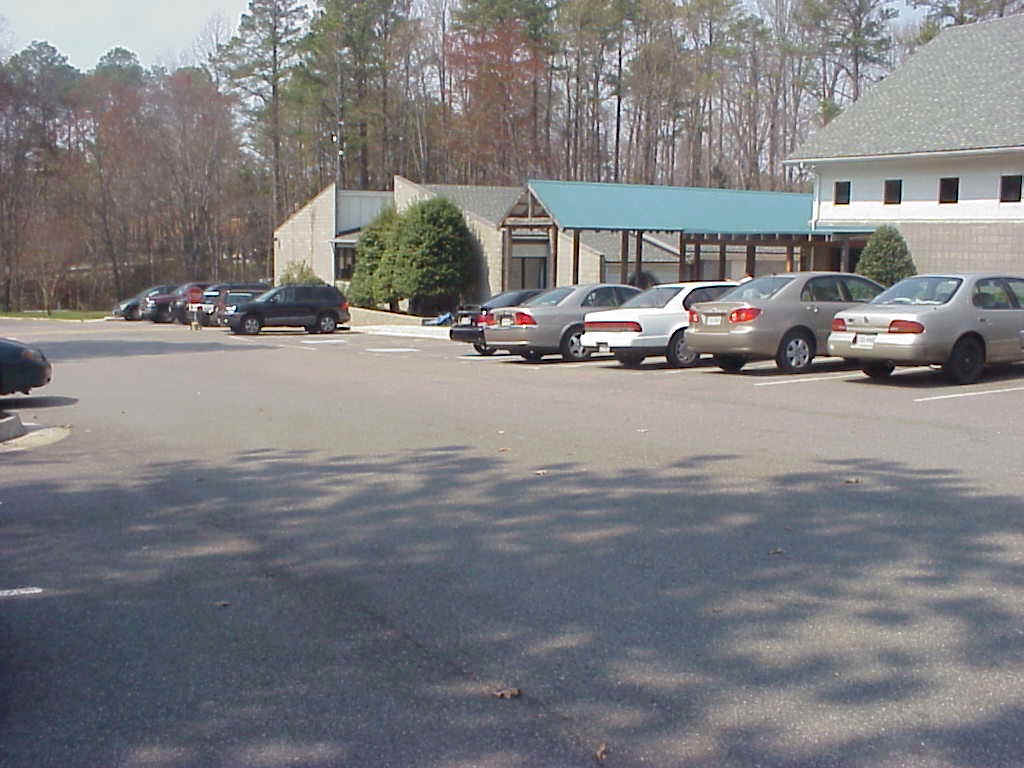
Now,
let's take a peak at the West End Assembly of God
about the same time of day. As you can see, it's
almost empty. Indeed, the parking lot is vacant
nearly all the time, with the exception of Sunday
services.
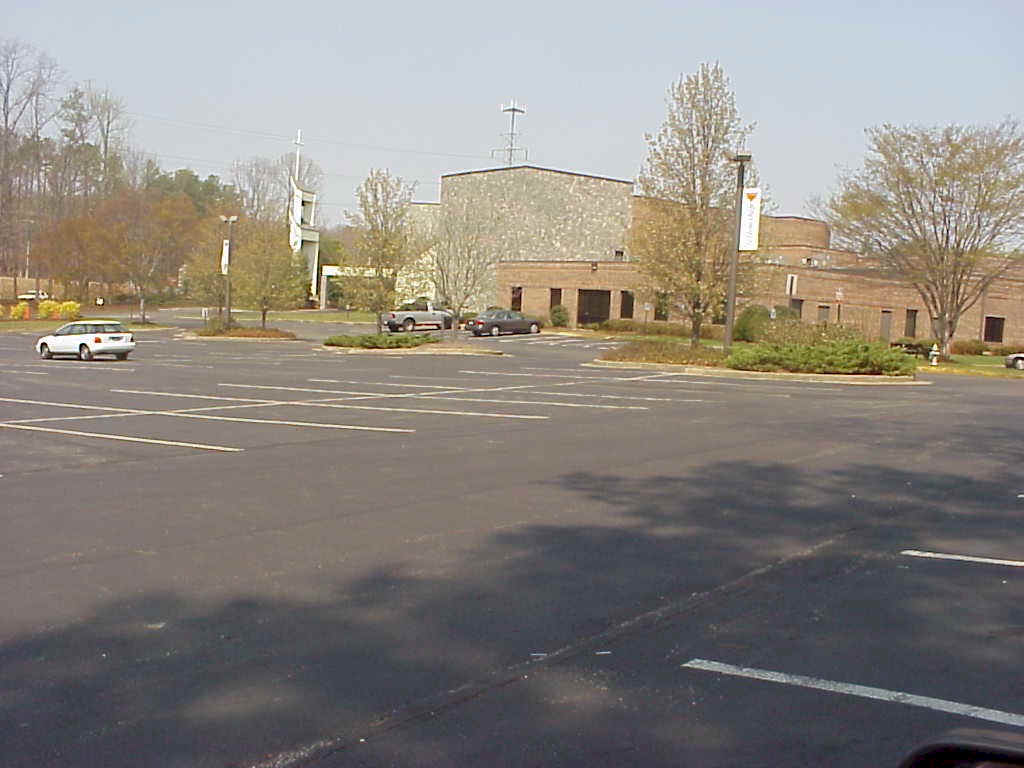
Now
for a glimpse of the parking lot at the Temple
Beth-el....
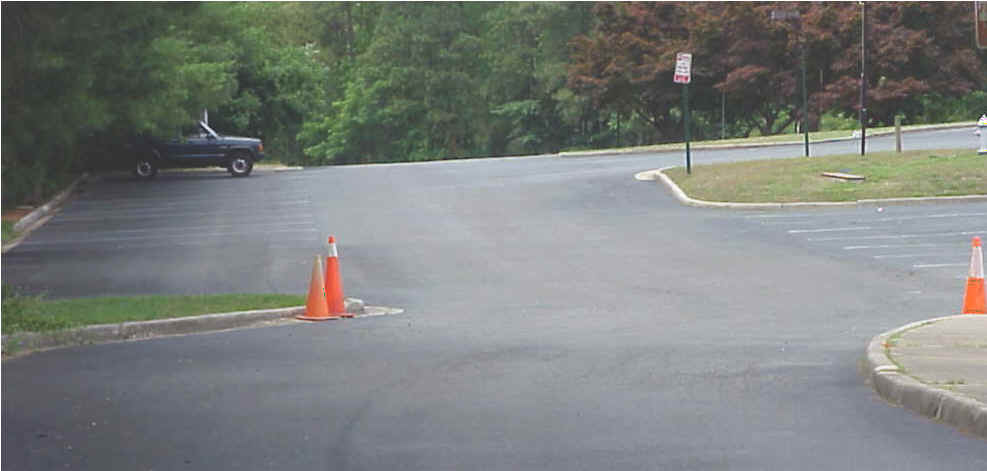
|
(Due
to the layout, I couldn't get a good shot of
the sanctuary surrounded by parking lot in a
single photo, so I've displayed the building
and the parking lot separately. I took these
photos Sunday. The West End Assembly of God
was bustling. Needless to say, the synagogue
complex was a ghost town.) |
|
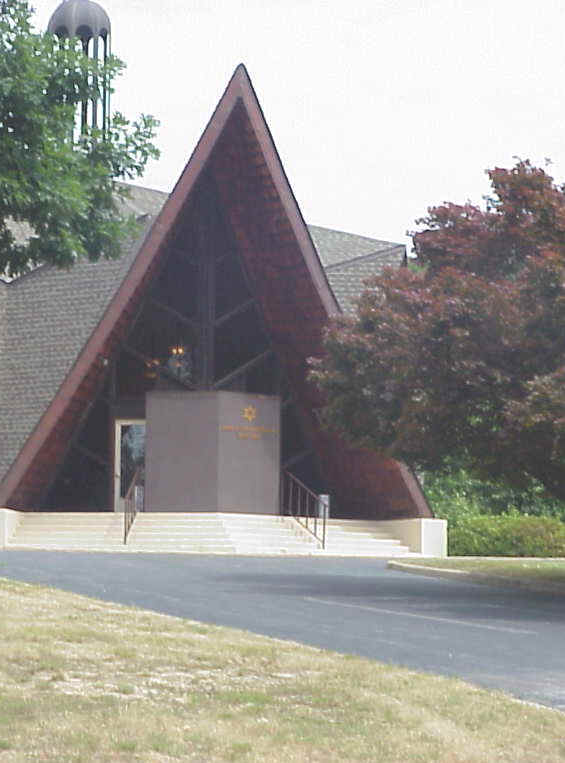
|
The
first point worth observing is the isolation of the
structures. The buildings are architecturally
distinctive in their own way, but they are
disconnected from everything around them. There are
no pedestrians. There is no street life. The
buildings do not invite interaction with the
community. If you seek to withdraw from the world,
then such isolation makes sense. If you wish to
embrace the world, then it does not.
The
second point worth making is the wasteful use of the
land and pavement. How much money did these
institutions spend acquiring the land, grading and
paving the lots, landscaping them, and resurfacing
them?
Here's
the irony: The Montessori school generates demand
for parking Monday through Friday, the synagogue on
Saturday and the church on Sunday. Just imagine a
pattern of land use in which these facilities shared
the same parking lot with each other -- and, for
good measure, with neighboring residents who would
use it at night. A much
smaller parking lot could do quadruple duty for
school, church, temple and homeowner, and knit them
all together into a much closer community.(1)
Examples
of wasteful extravagance could be replicated
endlessly across suburban Virginia. The problem is
not any lack of good will between Christians, Jews
and Montessoris. The problem is zoning codes that
separate different spheres of human activity and
mandate huge parking lots around the structures.
Suburban
Virginia is awash in parking lots. Here is an image
of the wasteland that surrounds Regency Mall and
cuts it off from neighboring residences. (To be
fair, I took this photo Sunday morning; the parking
lot is not always this empty.)

Though
located in an upscale part of Henrico County,
Regency is in decline. New regional malls at Short
Pump and Stony Point, dressed up as
"pedestrian" destinations, have attracted
much of its clientele. Regency Mall management has spiffed
up its parking lots with shrubs and ornamental trees
but nothing can hide the Saharan barrenness of the
mall perimeter.
Contrast
Regency Mall with Carytown, an urban shopping
corridor that is prospering despite a glut of retail
space in the Richmond metropolitan region. If you
judged Carytown by architectural style, there is
nothing impressive about the retail district. Most
shops consist of plain, two-story buildings. Only an old
church converted into a restaurant and boutiques
stands out a visually impressive. But Carytown
"works" because of its pedestrian-friendly
streetscape.
One
key to the streetscape is the placement of the
parking spaces. Carytown runs about 10 blocks along
Cary Street, a one-way thoroughfare of four lanes.
Two lanes are reserved for parking spaces, which
usually fill up in a hurry. The parking lanes fill a
dual function: They provide places for cars to park.
But they also create a barrier between the traffic
in the street and the pedestrians on the sidewalk.
|
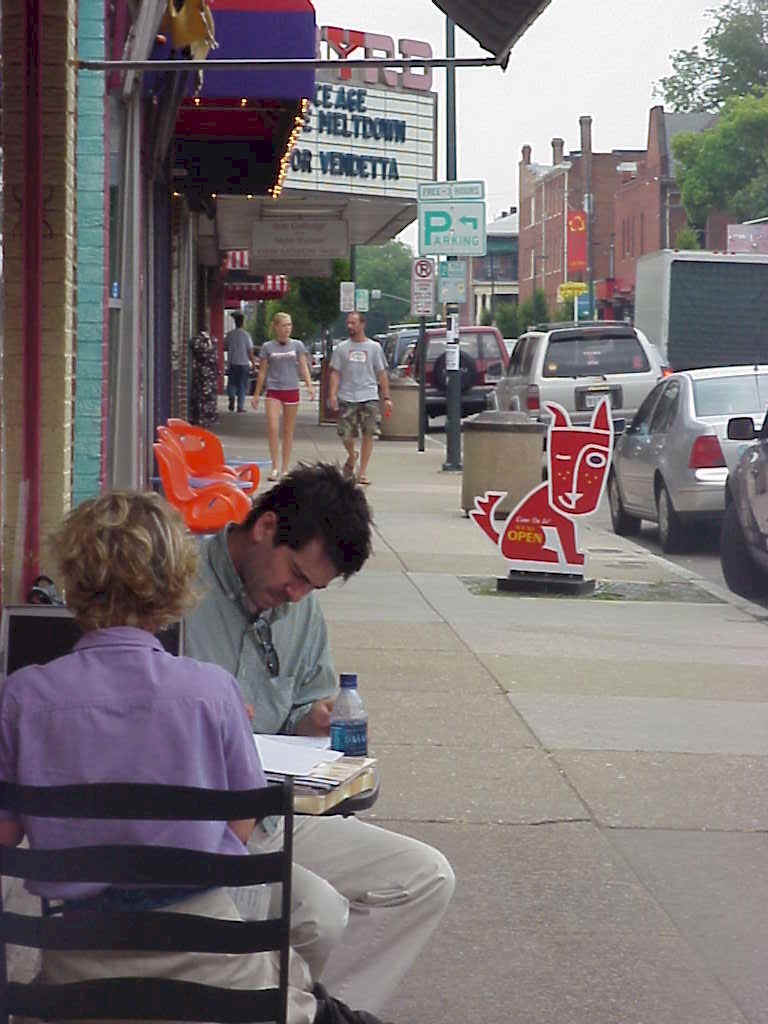
|
|
This
photo near the old Byrd Theater shows clearly
how parked cars separate pedestrians from
traffic. The sidewalk is narrow but lively.
Retailers display merchandise and promotions
on the sidewalk. Restaurateurs place small
tables out front. Carytown is a fun place to
visit and stay a while -- to grab a cup of
coffee, eat a meal, read a book, window shop,
stroll down the street |
or engage
in everyone's favorite pastime, watching other
people.
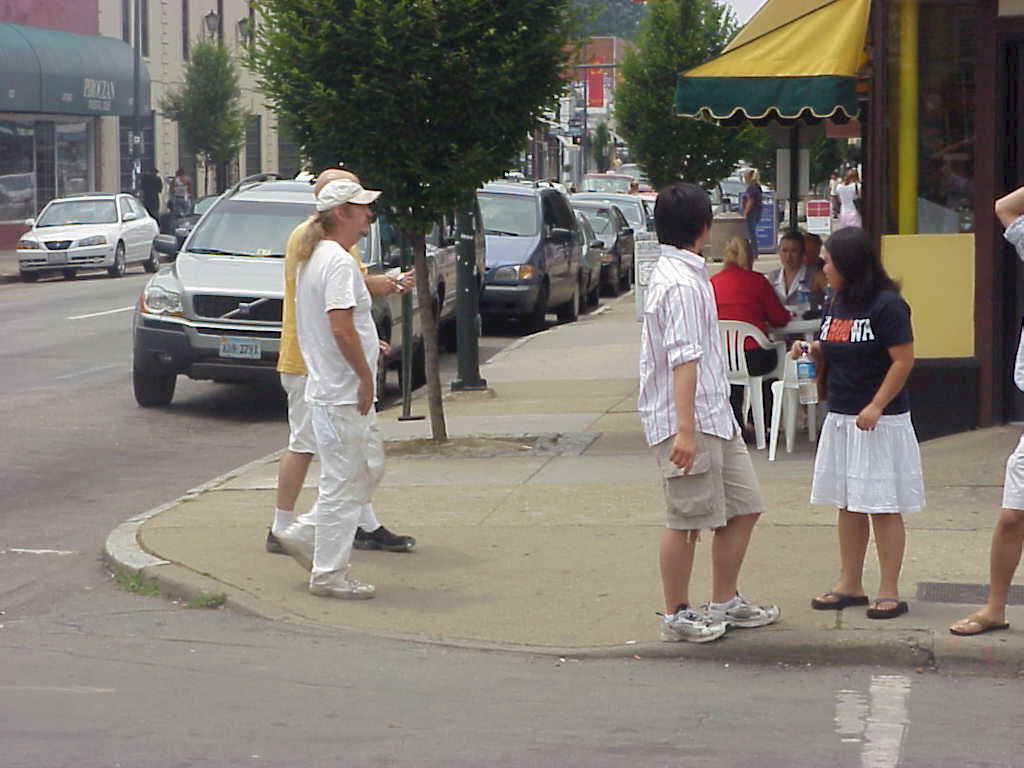
Aesthetically,
Carytown pales compared to the new malls. The
sidewalks are cement -- no fancy brick pavers. There
are a few trees, but there is little other landscape
ornamentation, certainly nothing like the bright
flower boxes that can be found in the new
"pedestrian" malls out in the county.
Carytown works because it is embedded organically in
a larger neighborhood of grid streets and alleys,
with houses behind all the stores. In contrast to
retail centers in the suburbs, the presence of
Carytown does not hurt residential property values.
It elevates property values. People pay a premium
to live within walking distance of the district.
Carytown
also is popular because its streetscapes work. The
shops are not insulated by asphalt badlands. Yet
there is plenty of room to park. Spaces are tucked
away on side streets, alleys and lots behind the
shops. On a
|
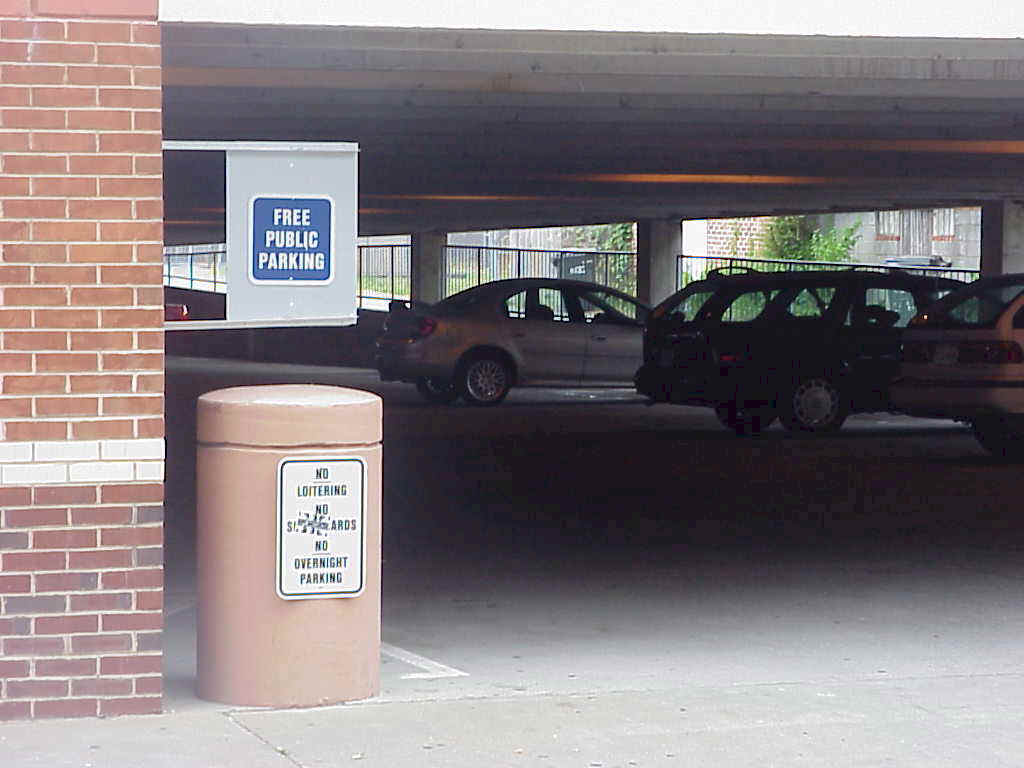
|
|
side
street behind the Byrd Theater there also is
this modest two-story parking structure (seen
to the left).
Streetscapes
are handled skillfully in other parts |
of Richmond,
too, including a neighborhood shopping area known to
locals by the intersection of two streets, Libbie
and Grove. As in Carytown, parking spaces that
buffer the sidewalk from traffic are crucial to
defining the streetscape. As in Carytown, merchants
treat the sidewalk as an extension of their
establishments, where they display wares and create
inviting spaces with planters, benches, tables and
chairs.
Curbside
parking at Libbie and Grove is not sufficient to
accommodate all the customers but, as in Carytown,
extra parking is tucked away behind the stores, as
seen in the photograph below, where expanse does not
interfere with the streetscape out front.
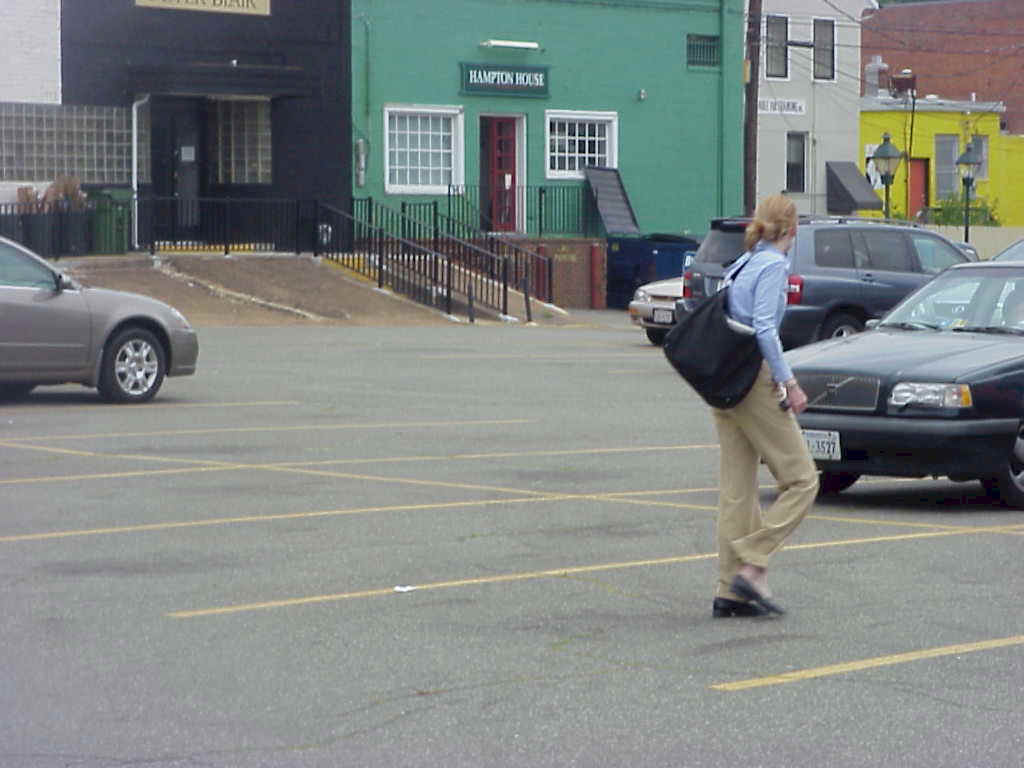
Suburban
retailers can't replicate the pedestrian experience
to save their souls. The retail experience in
Henrico County is entirely dependent upon the
automobile. Despite the existence of
pedestrian-friendly amenities such as sidewalks and
landscaping, the elements are laid out all wrong.
(In a supreme irony, even the "pedestrian"
malls are accessibly only by car and are surrounded
by endless parking lots.)
One
example of dysfunctional parking shall suffice to
make the point.
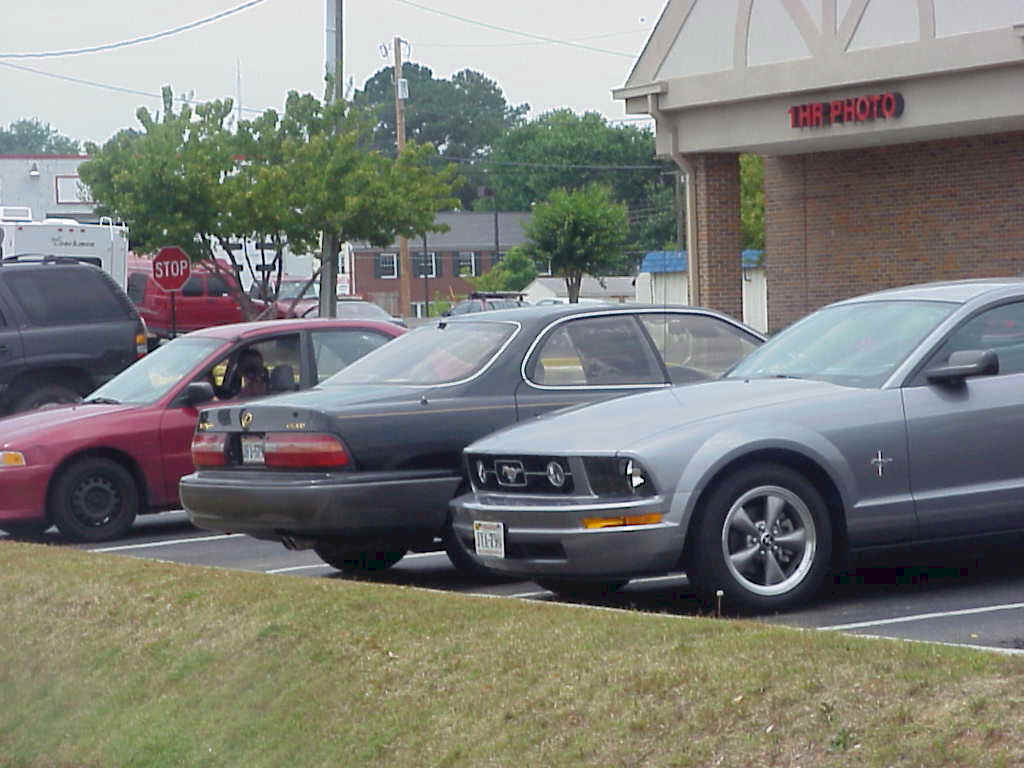
On
the Broad Street retail strip, there is a Walgreen
Drug Store. A sidewalk runs along Broad Street past
the store. But the sidewalk looks like someone's
idea of a bad joke. Other than a curb, nothing
stands between
the sidewalk and the Broad Street traffic. In
contrast to Carytown, where parking spaces serve as
a buffer between cars and pedestrians, the parking
lot serves as a buffer between pedestrians and the
store. Get that? The parking lot stands
between the sidewalk and the store. No window
shopping here!
Someone also
has scattered ornamental trees and bushes randomly
around the Walgreen perimeter, but this
"landscaping" fails to define the space in
any meaningful way. Here's
the kicker:
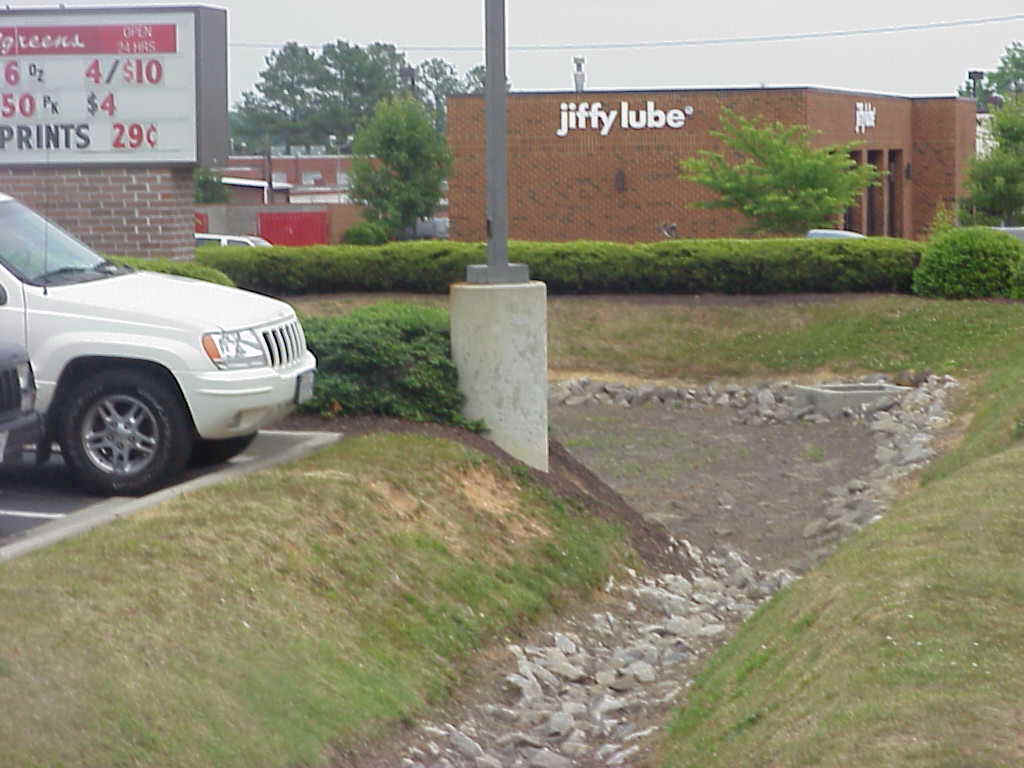
Between
the sidewalk and the Walgreen parking lot runs a
stone-lined drainage ditch!
Some
lobotomized automaton installed the
sidewalk, planted the trees and shrubs, paved the
parking lot and, for good measure, threw in an open
drainage ditch without any apparent thought to the
impact on customers. Whoever was responsible for this
abomination -- developer, retailer or county
planners -- could not have created an uglier, more
dysfunctional arrangement of streetscape elements
had they locked themselves in a room, dropped acid
and scribbled their blueprints with blindfolds on.
Carytown
will endure. Libbie and Grove will endure. Even as
the buildings age, sidewalks crack and curbs
crumble, people will continue to savor the sense of
place created by the streetscapes. They will always
find the area worth saving. But the Walgreen
store on Broad Street will not endure. When the
building outlives its fully depreciated life span,
Walgreen will move to another location, leaving a
vacancy for a low-rent tenant. The configuration of
elements is so poorly arranged that the landowner
would be well advised to bulldoze the entire tract
and start over.
Sadly,
the same can be said of entire zip codes of suburban
development. Oceans of asphalt destroy any sense
of place, leaving behind nothing worth saving. By failing to appreciate the significance of
parking lots and streetscapes, the architects of
Virginia's suburbs have prevailed over the massive
destruction of wealth and the eventual demise of
their commercial tax base.
--
June 12, 2006
1.
Along these lines, in the Fan neighborhood in the
city of Richmond, an Episcopalian and a Jewish
congregation do share a two-story parking structure
on West Franklin St. But that's in the city, where a
different mentality reigns.
|
